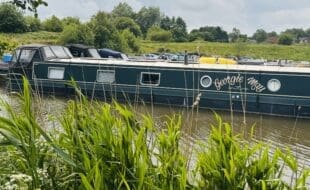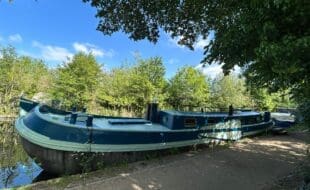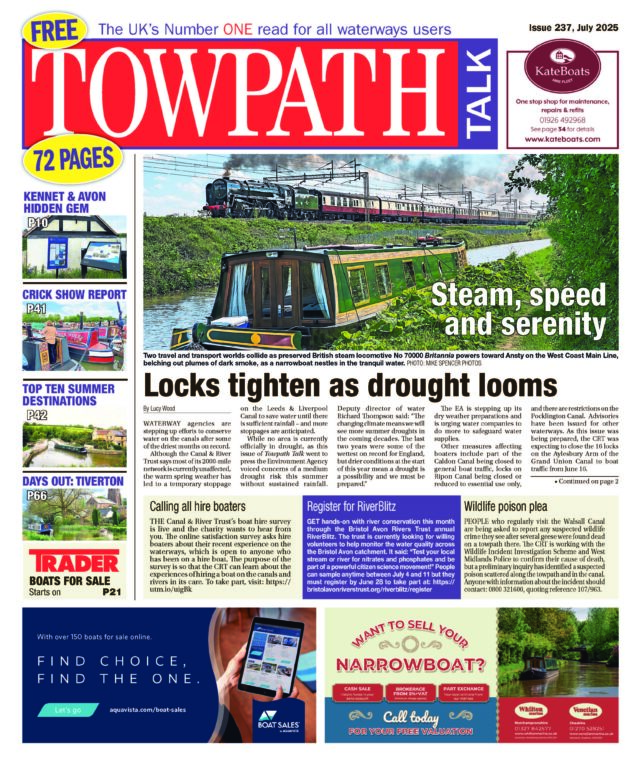An important milestone was marked on the Leeds & Liverpool Canal on Easter Saturday. Sally Clifford went along.
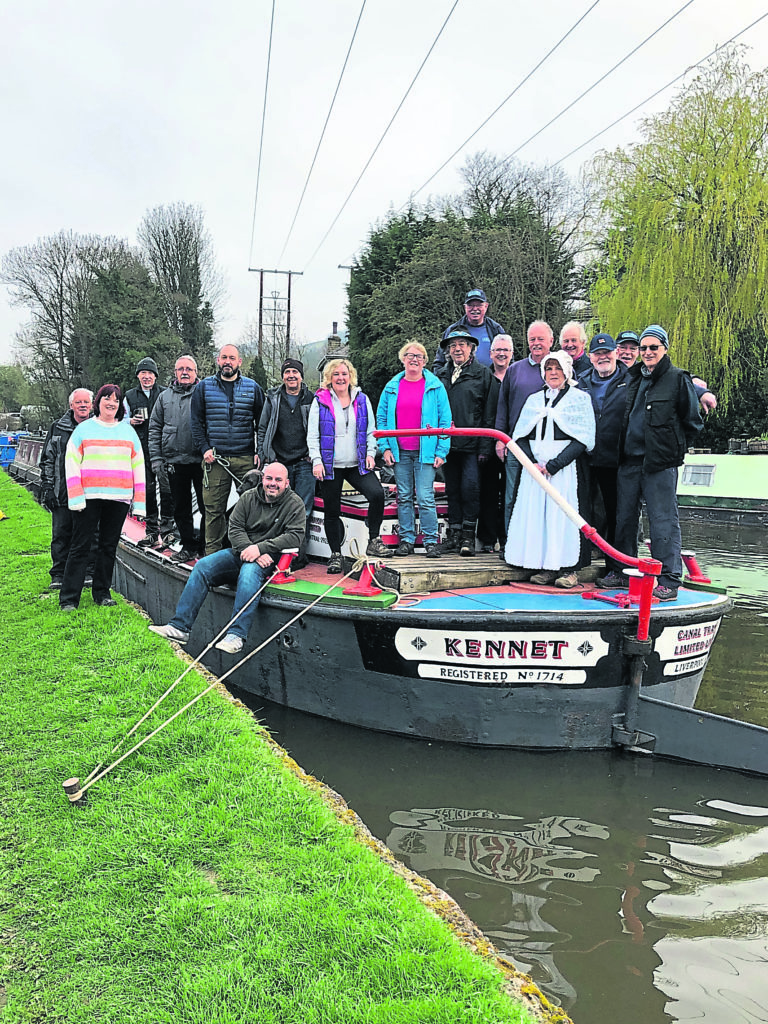
THE gathering crowd for the departure of the heritage boat Kennet symbolised the significance of the occasion.
Leading the flotilla of 12 boats – piloted by members of Craven Cruising Club and Airedale Boat Club – out of Bingley’s landmark Five Rise Locks, Kennet, the floating museum now maintained and operated by the Leeds & Liverpool Canal Society’s volunteers, was recreating an important chapter in waterway history.
For it was on this day, Easter Saturday, 250 years ago that two barges loaded with coal set off from Bingley to Skipton where the coal was sold at half the price previously charged. They were the first boats to carry goods on the Leeds & Liverpool Canal, and the reduction in cost demonstrated the important part the canal would play in Yorkshire’s economic growth.

Interestingly, events were documented by the 18th century diarist Elizabeth Shackleton, who wrote when a Mr Leach of Riddlesden took coals in one of his new boats to Skipton.
Exhibition
Following Kennet’s 14-mile journey, the boat was moored in the canal basin in the centre of Skipton where she remained open to the public over the Easter Bank Holiday weekend, allowing visitors to view the onboard exhibition about canal people and boats, along with video and photographs of events from the 200th anniversary of the canal in 1973.
Built in 1947, Kennet is a River Class Leeds & Liverpool Canal short boat – so called due to its maximum size for the locks from Wigan to Leeds. It is understood to be one of only a few surviving of its kind, travelling the length and breadth of the canal.
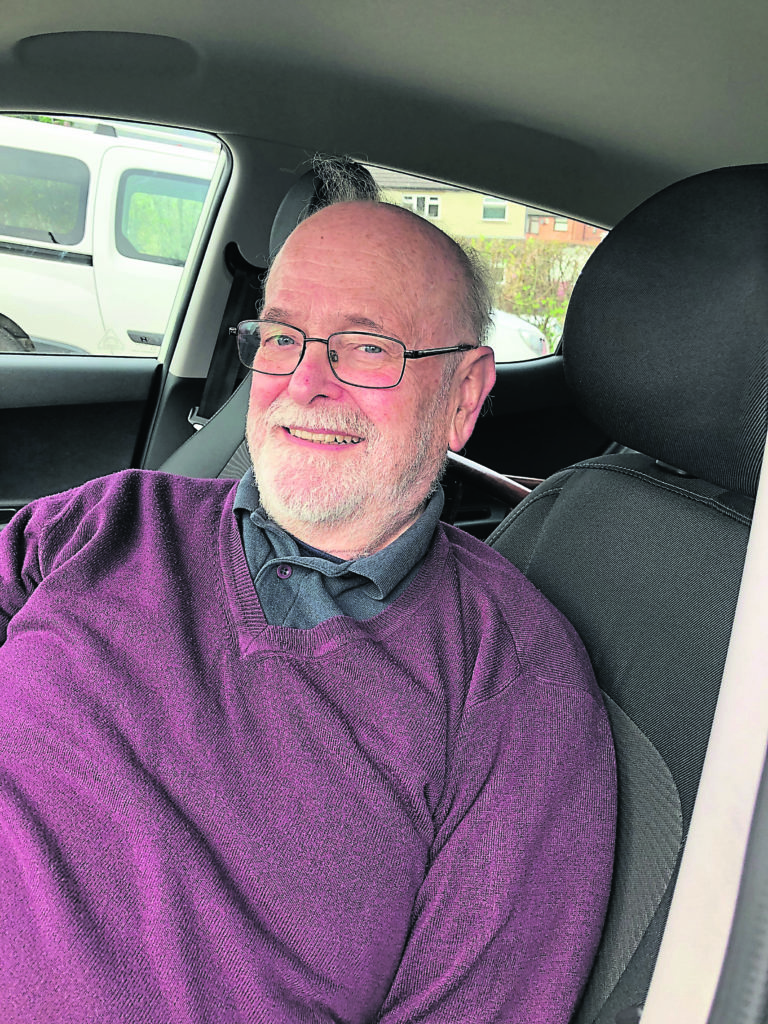
Canal and industrial historian Mike Clarke, president of the Leeds & Liverpool Canal Society which he was instrumental in setting up in 1997, explained the 14ft 4in by 62ft 6in boat (depending on how you measure the length) could carry around 50 tons.
Flagship
Named after a navigable river, Kennet’s importance, and the part it played in the development of the economy through its role carrying cargo along the canal, is acknowledged through its inclusion in the register of National Historic Ships UK.
In 2016, the bicentenary year of the completion of the canal and the first complete crossing, which Kennet and a flotilla created in the October, the boat was selected as the National Historic Ships UK Regional Flagship, the first time the accolade was granted to an inland waterway boat.
Following the boat’s inclusion in the British Waterways Lease and Acquisition Scheme in 2008 for the transfer of redundant heritage craft to suitable organisations, the Leeds & Liverpool Canal Society made a formal application under the scheme and the lease was signed in 2009.
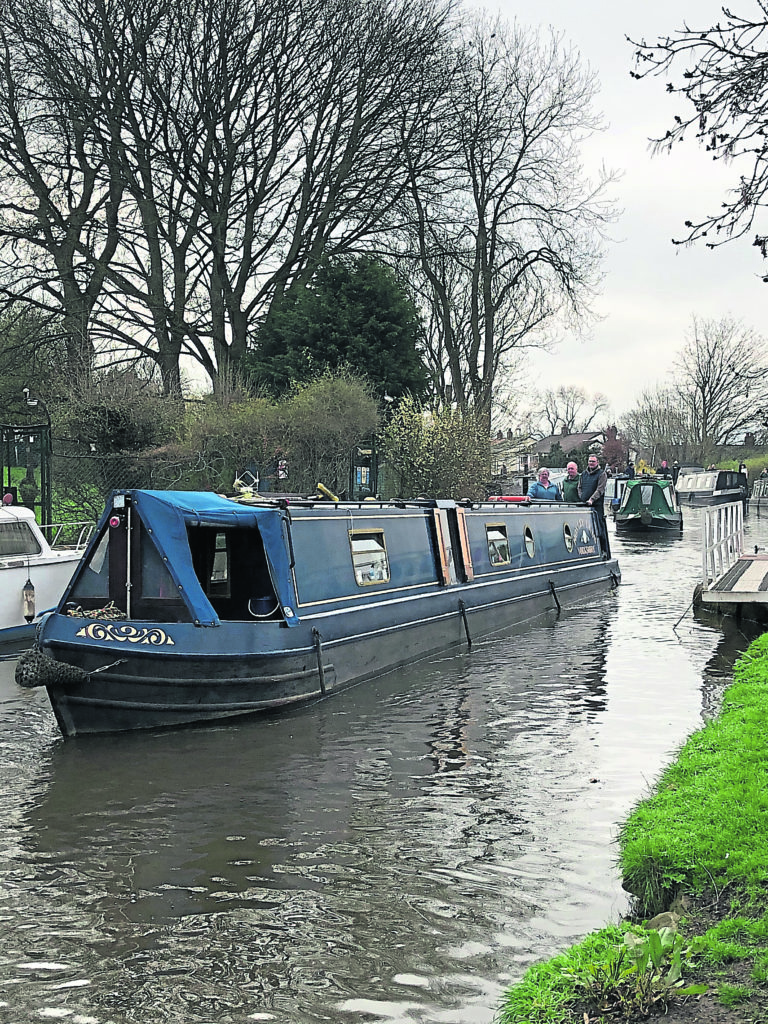
The ownership of Kennet was transferred to the Leeds & Liverpool Canal Society in March 2011 – the same year the canal society was awarded a project grant from the Heritage Lottery Fund to conserve and refurbish Kennet for future generations to enjoy. On board, visitors embark on a journey through photographs and other memorabilia used to create a floating interactive museum which is helping the society educate and raise awareness of the important part Kennet, and the canal, played in our history.
Said Mike: “It has been incredibly successful. We have won five national awards and local awards for the work we do.”
With such a rich and fascinating history, there is always something to celebrate on the canals according to Mike and, judging by the turnout on the towpath for Kennet’s departure on this special anniversary, it is appreciated by passers-by as well as those such as the Leeds & Liverpool Canal Society volunteers. Among them is the society’s ‘chairmum,’ Freda Childs, who donned clothing befitting the recreation of this historic occasion.
“We are trying to add value to people’s experiences of the canal. It is a pleasant environment to be in, but there is so much more to see if you know where to look and you can interpret what is there,” said Mike.
The areas of West Yorkshire and East Lancashire were the bedrock of industrial economic development, according to Mike.
“Textiles, for the first 100 years, made 10 times more money than coal and three times more than iron and steel. They were incredibly important, and so I always say the Leeds & Liverpool is the canal that put the ‘great’ into Great Britain because of the area where it started,” added Mike.
The Leeds & Liverpool Canal Society is keen to recruit more volunteers.
For more information, or to get involved, visit www.leedsandliverpoolcanalsociety.co.uk
#leedsandliverpool #towpathtalk #canals #canalsandrivers #narrowboat #rivers #waterways #lifeonthecut #boating #boats #canallife #canallifeuk

